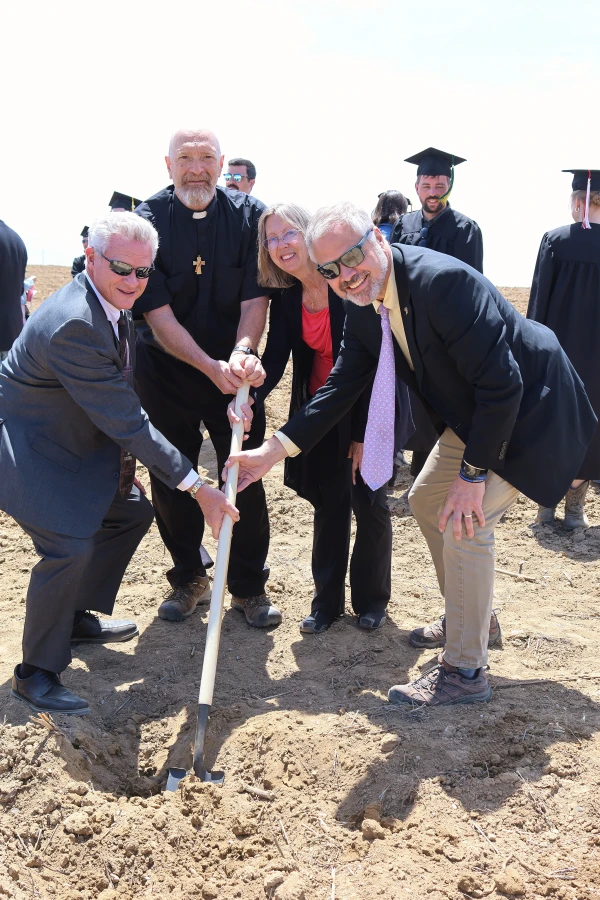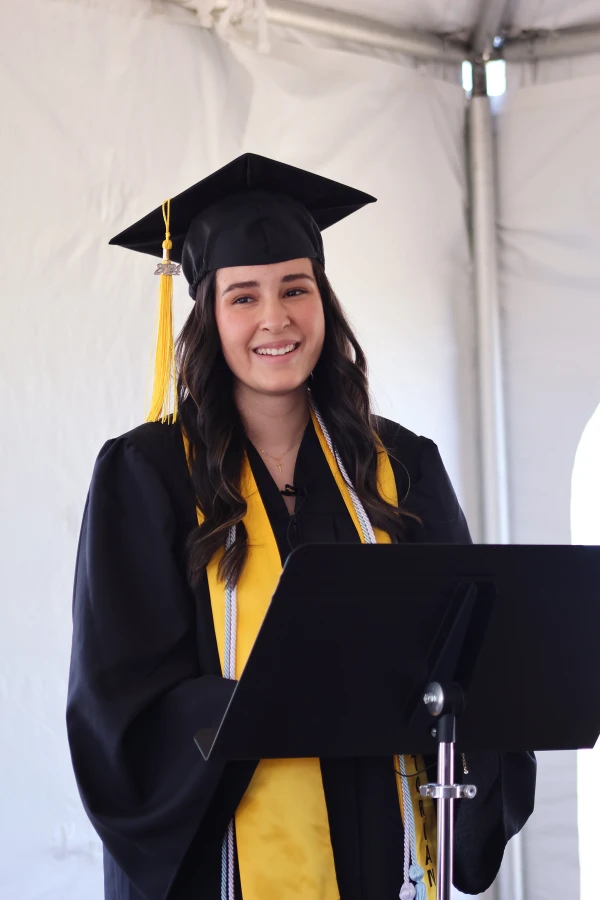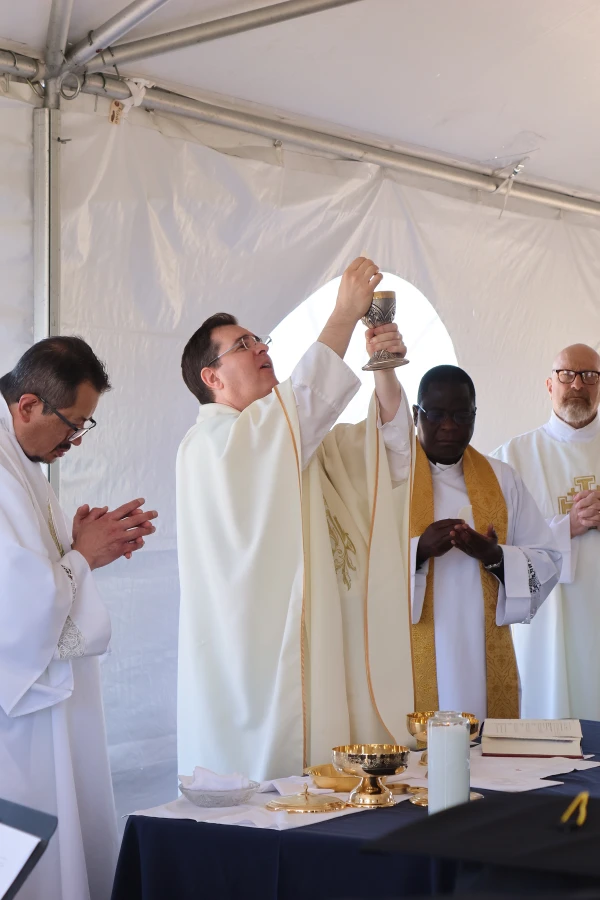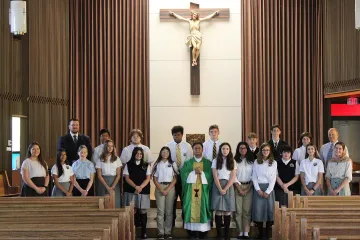CNA Staff, May 22, 2024 / 06:00 am
After operating out of a parish for four years, a long-anticipated Catholic high school in northern Colorado celebrated graduation on its newly broken ground last weekend.
The seniors who pioneered St. John Paul II High School as freshmen studying at Our Lady of the Valley Parish four years ago graduated on the 44 acres that will be home to the school’s future building. These 12 students — the first graduates to have gone through the entire program — joined the founding headmaster, Blaise Hockel, in breaking ground days before graduation.

Local Coloradans have been waiting decades for a Catholic high school in the Fort Collins area, miles away from any Catholic high school. Forty-nine years before St. John Paul II opened its doors in Windsor, Colorado, on Aug. 17, 2020, local Catholics sent a letter to the archdiocese requesting a Catholic high school.
As the closest Catholic high school in a 45-mile radius, St. John Paul II draws students from a 60-mile radius, even bringing students in from Cheyenne, Wyoming.
“For many Catholic families in the area, including my own and my wife’s, when our families came into northern Colorado, they were hearing whispers and rumblings about a Catholic high school opening up,” Hockel told CNA in a phone call.
Now, some 53 years later, the long-awaited school will have its own building, grounds, and even a chapel.
“When we started this process, we very intentionally wanted to build something that was beautiful, that would lead to families, to students, to the people of northern Colorado seeing it as the heart of the Church in northern Colorado,” Hockel said.

The model plan shows landmark paintings such as “The Creation of Adam” by Michelangelo, while the chapel features an altar rail, elegant altar, and accents of blue paint on the vaulted ceiling and walls.
“When you walk into a space where you’re supposed to be pursuing the good, and it is a bland beige, it’s really hard to aspire,” Hockel continued. “It’s hard for teachers to inspire. It’s hard for students to aspire towards greater things. So we’re trying to design this building not like so many of the other things that have been slapped up over the last couple of decades.”

The new building is set to be completed in time for the 2025-2026 academic year. Hockel said the school has received an “unprecedented” amount of support in the most necessary area — more than $25 million in funds for the school.
“At the beginning of the process, we were working with a major consulting firm who told us that we would be able to raise a certain amount of dollars and no more,” he said. “And we tripled the number of dollars that we raised within four months of going out, asking the community for support.”
“The experts have been at a loss to explain why this is going as well as it is,” Hockel continued. “But the answer is pretty simple. It’s a combination of a desire of the people for the good for their community and the will of God, and nothing short of it.”
The school began with 26 students in 2020 and has nearly doubled in size; Hockel anticipates more growth.
(Story continues below)
“As we’ve closed on our land here … we’re going to be building our first phase of the school with the anticipation of growing to 180 students in the next two years, and then growing up to 250 while we’re in our Phase 1 plan,” he explained. “Then as we look to our next two phases across the next 10 to 20 years, we’ll look to increase that number to a population of about 400 to 450 students and maxing out at, within the next 30 years, a 600-person campus.”
St. John Paul II offers “a four-year program steeped in traditional classical education” that emphasizes “a holistic education,” Hockel noted.
The classical education model at St. John Paul II emphasizes primary sources, the early Church Fathers, as well as a “very robust” math and science program.

“The students read primary sources, they read Church Fathers,” Hockel said. “They go through a very robust math and science program so that they can get up into modern calculus and into modern physics, with the anticipation that by the time they graduate from our school, they’re prepared to be well-formed young men and women if they choose to pursue college or if they choose to pursue trade, that regardless, they are well-formed citizens.”
“We’re built on the principle that we should give to the children a holistic education, which is built around their mind, around their body, around their communal development, around their spiritual development, so that ultimately they can fulfill that call of the Great Commission and go out and make disciples of all nations,” he added.






